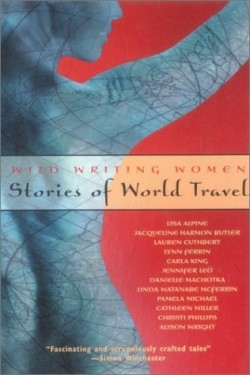Wild Writing Women
Stories of World Travel
Travelers’ tales have made for fascinating reading ever since Alexander’s army crossed the Hindu Kush. Julius Caesar traveled north and called the Britons brutes; Marco Polo conjured Chinese palaces and steaming noodles. Like pilgrims’ tales of the road to Compostela, these were images of places that, when ordinary people seldom left their hometowns, might just as well be heaven or the moon.
Charting an unseen world, such tales inspire and terrify. Humankind’s earliest documentaries, they unveil rare vistas that are all the rarer for their firsthand urgency. Seen through a single pair of eyes, rendered with a single hand not all that different from one’s own, these accounts feel authentic. Each is not a mere snapshot but a bite-size lesson in history, anthropology, and geography. Many are also advertisements: given the chance to conjure tigers and temples, fine writers shine. How many legions of sojourners have been spurred across oceans by Twain, Muir, and Kipling?
That the overwhelming majority of travelers’ tales have been written by men is a function of the very history and anthropology their stories teach. If scaling cliffs and navigating casbahs has been difficult and potentially deadly for male writers, for their female counterparts it has been prohibitive. The works of Freya Stark and Isabella Bird, whose descriptions of Japan and America were Victorian-era bestsellers, proved not only that female writers could bring a whole new perspective to the genre, but also that female readers yearned for their own type of travelogue.
It is only over the last few decades that this yearning has found fruit. With travel growing easier and globalization making foreigners more familiar to each other, female writers have claimed the genre and made it their own.
Meeting monthly for nearly ten years now in a San Francisco bar, the group that calls itself Wild Writing Women comprises a wealth of cultural backgrounds, spanning four decades in age and hundreds of thousands of miles on the road. Bound together by what the foreword to their new anthology calls “a love of travel and adventure and a compulsion to record our experiences for others,” the group’s twelve members get around: breaking out in rashes in Mandalay, getting high with shamans, sharing caves with bats. Celebrating a freedom in body and mind that their grandmothers could only dream of, they climb volcanoes, shoot rapids, mingle with monks. They savor such sensual extremes as escargots, mascarpone, and slime secreted from frogs’ sweat glands. As if making up for lost time, for all those countless women constrained to stay home, these writers trek. They dive. Alone and with others, they drink—Chinese tea and Italian wine and enough Scotch whiskey to make them see ghosts.
Like all such anthologies, Stories of World Travel offers an armchair journey, whisking from Yosemite to Burma in a heartbeat. Like the front seat at a slide show, it yields in a single sitting the Champs Elysées, a New Delhi traffic jam, a Madagascar rainforest. But as true reflections of these times, revealing more than mere scenery, the twenty-four tales embrace intrigues and issues that, if not exclusively women’s province, are sketched in ways that only women could have sketched them. Politics make headlines and put textbooks out of date; they also spawn memories to last a lifetime.
In “Geography of Dreams,” screenwriter Christi Phillips recalls the filmmaker she met in Red Square who “could speak five languages, could say ‘I love you’ in six.” In “Chinese Like Me,” editor Jennifer Leo confides that on her first trip overseas, hours before Hong Kong’s handover in 1997, “for the first time in my life I was attracted to Asian men.” These are tales of heartbreaking honesty, as is photojournalist Alison Wright’s “Learning to Breathe,” a stunning account of the bus crash that nearly killed her amid Laotian vistas of “green undulating hills adorned with bamboo,” and that she is certain her Buddhist faith helped her survive.
These tales’ frankness is their chief strength, making them feel like chats with friends—but friends well-traveled and eloquent enough to toss off such similes as novelist Linda Watanabe McFerrin’s “mussels shut tight as virgins’ thighs,” or who, like guidebook author Carla King, dared to roar across Inner Mongolia on a motorbike.
If the collection is uneven, with some landscapes less dazzlingly rendered than others, this is the texture that comes with the personal, with anthologies in general, with travel itself. The exhilaration these writers share-with those met on the road, with their readers, and most remarkably with one another-will inspire women travelers to cross more borders than ever before.
Disclosure: This article is not an endorsement, but a review. The publisher of this book provided free copies of the book to have their book reviewed by a professional reviewer. No fee was paid by the publisher for this review. Foreword Reviews only recommends books that we love. Foreword Magazine, Inc. is disclosing this in accordance with the Federal Trade Commission’s 16 CFR, Part 255.

